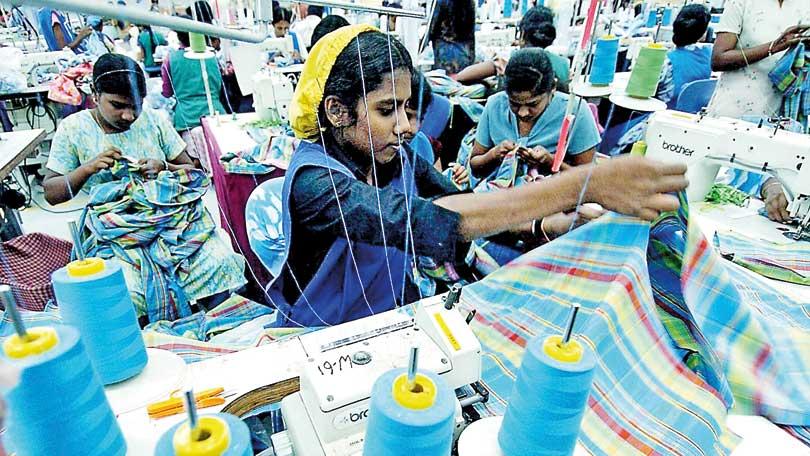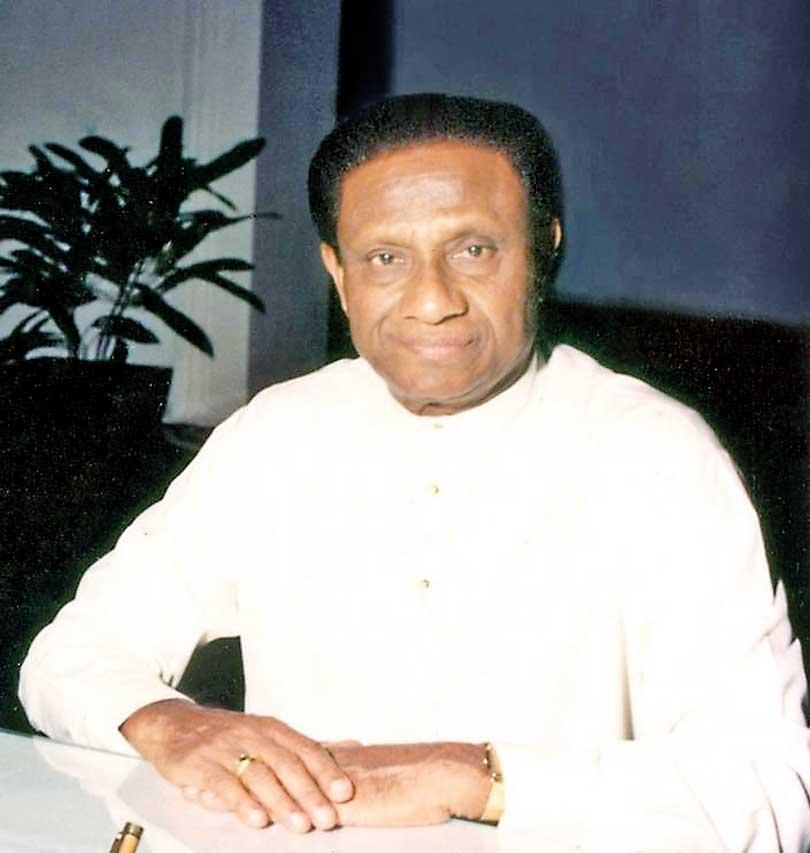Reply To:
Name - Reply Comment

 I am an individual who had the opportunity to serve under the late President Premadasa as the Chairman and Director General of the Greater Colombo Economic Commission and also as the First Chairman of the Board of Investment of Sri Lanka from 1991 to 1993 and prior to that as the Chairman of the Peoples Bank, State Mining and Mineral Development Corporation and Ceylon leather Products Corporation under the Presidency of J R Jayewardene and dedicating a total of 20 years for these purposes, sacrificing in the meantime a career in the private sector, to build the public sector. It will be opportune for me to write about the economic transformation that took place during this period under President Premadasa, touching especially on the 200 Garment Factories Programme given that this year marks the 26th death anniversary of the much loved politician.
I am an individual who had the opportunity to serve under the late President Premadasa as the Chairman and Director General of the Greater Colombo Economic Commission and also as the First Chairman of the Board of Investment of Sri Lanka from 1991 to 1993 and prior to that as the Chairman of the Peoples Bank, State Mining and Mineral Development Corporation and Ceylon leather Products Corporation under the Presidency of J R Jayewardene and dedicating a total of 20 years for these purposes, sacrificing in the meantime a career in the private sector, to build the public sector. It will be opportune for me to write about the economic transformation that took place during this period under President Premadasa, touching especially on the 200 Garment Factories Programme given that this year marks the 26th death anniversary of the much loved politician.
The 26th death anniversary of Premadasa falls on May 1, 2019. It is sad that the country lost a dynamic leader who was action and result oriented person with the vision to spread economic development throughout the country. He did this by taking the industries to the villages and provided jobs to rural youth, especially females which resulted in the eradicating of poverty in the rural sector. For the first time rural girls manufactured export quality garments for overseas countries.
As chairman of the People’s Bank I was closely associated in the implementation of pro poor programmes such as direct lending to the self employed and small scale projects through the People’s Bank and its network of branches. The new concept of President Premadasa for the banks was to set up Praja Naya Niyamakas (PNN) who were given a loan of Rs 100,000 by the bank on provision of security to offer small loans ranging from Rs 500 to Rs 10,000 per person for micro projects. Further the rates of interest charged by the PNN and the on lending rate was recommended by the bank to enable the people to obtain loans at a very much reduced rates compared to the money lenders who charged exorbitant rates. Two of the major programmes launched in which I was able to make a contribution were the Janasaviya or the poverty alleviation programme and the 200 garment factories programme as the chairman and director general of the BOI.
Both these programmes made a significant contribution to the economic emancipation of the rural people which comprised 70% of the population of this country.
President Premadasa was one who had feeling for the common man. He reached out to them through housing development and the Gam Udawa projects.
Although giving free handouts were the order of the day, President Premadasa was able to change this concept by pushing economic development to the provinces by inviting the private sector businessmen to set up garment factories in the rural areas.
Preference was given to Janasaviya certificate holders in the granting of jobs in the 200 Garment Factories programme and this enabled the people to earn a wage rather than depend on free handouts.
The 200 garment factories programme could be considered as one of the main achievements and contributions made by President Premadasa to increase the exports of Sri Lanka and to uplift the rural economy
The policies of the late president resulted in change of attitudes of the public sector and the staff of banks to go to the small man who was earlier neglected. Generally, many promises are made by politicians with no implementation and later forgotten.
However, President Premadasa made it a point to monitor and evaluate performances of banks, ministries, departments and officials not only by verifying statistics, but by sending his staff, who acted as detectives, to visit the sites and give him a report.
One evening I had a call from the Secretary Finance Paskaralingam who told me that the President wanted me to take over the GCEC now BOI. However I had no option and had to accept the challenge. The GCEC was first headed by Upali Wijewardena, then Paul Perera, Tilak Samarasekera and Nissanka Wijewardena from whom I took over.
There were many new changes taking place at the GCEC. Some of the major ones were the setting up of the Koggala Export processing Zone, the 200 Garment factories programme and the conversion of GCEC to BOI. For the first time incentives for the infrastructure projects were brought in.
The 200 garment factories programme could be considered as one of the main achievements and contributions made by President Premadasa to increase the exports of Sri Lanka and to uplift the rural economy. For the first time we saw factories shifting out of the Katunayake and Biyagama free trade zones in the Colombo and Gampaha Districts to outside provinces.
The garment industry became the largest industrial export from Sri Lanka and has now reached US $ 5.0 B due to the vision of the late president.
The opposition politicians who criticised the 200 garment factories programme (calling them Jangi [underwear] factories) once in power commenced the 50 garment factories programme, giving free loans and other schemes, but they were not successful to the same extent as they did not have the same implementation capabilities possessed by Premadasa.
The private sector was drawn into the 200 garment factories programme and the BOI was solely responsible for its implementation.

The BOI was used as the vehicle to achieve this massive task of setting up 200 garment factories.
Since the BOI was directly under the president we found that we did not have any political interference even from the Minister of Textile Industries and could work to achieve targets and goals according to set rules and regulations. The first free trade zone was set up in Katunayake and the second in Biyagama where the current Prime Minister Ranil Wickramasinghe played a major role and in turn the GCEC also helped in the development of the Biyagama area. The success of the 200 garment factories programme was the ease of doing business, grant of tax incentives, textile quotas and luxury vehicles to those who really performed and set up factories which was carried out under BOI as per the applicable rules and regulations without any political interference. The BOI was a one-stop shop where investors could come to one place for all their requirements. President Premadasa wanted men who could perform and those with the “Can Do’ attitude and did not worry whether they were Red, Blue or Green.
I remember the frequent meetings we had at Sucharitha where President Premadasa invited investors to fix dates to open their factories and solved any problems they had. Always at these meetings the Chairman of CEB, Roadways and Water Board were present as these were three prequisites of investors.
Always at these meetings the Chairman of CEB, Roadways and Water Board were present as these were three prequisites of investors
The weekly meetings with the cabinet sub committee was another vehicle which sorted out matters.
We had laid down certain standards such as a minimum of 500 to be employed in each factory, providing of breakfast, uniforms etc which enabled to build quality factories catering to the export market. These factories uplifted the economic conditions in the villages which had a money circulation among the workers of Rs. 2 to Rs. 5 million per month.
The target was 200 factories employing 100,000 youth and putting into the economy Rs. 500 million to Rs. 1 billion per month with exports of minimum Rs 1.0 B per month.
Credit should also be given to the USA government, as the late president was able to utilise the garment quotas given to uplift the rural economy.
We also had investors from UK, Hong Kong, Singapore and Germany investing in factories.
At the time of his untimely death, 160 areas had been allocated to construct garment factories.
Another special feature was that each town or village got a clock tower.
Punctuality at the openings may be due to the clock towers. President Premadasa was ahead of time to open the clock towers to avoid the rahu kalaya or inauspicious time.
In 1991 the Apparel and Garment exports were app. US $ 764 M. With the setting up of the 200 garment factories programme the exports increased tremendously and in 2018 reached US 5.0 billion.
Some of the major events organised to take the government machinery to the people were the presidential mobile service, which took the ministries, ministers, secretaries and other officers to the provinces. President Premadasa who never took” no” for an answer expected the government servants as well as the private sector to have a “can do” attitude. He was a person who firmly practised the idiom ‘Walk the Talk’.
The ambitious programmes of the government could be easily achieved if they follow the policies of President Premadasa.
The leaders should follow President Premadasa’s policies to go to the villages and to see for themselves whether their needs are met and work for the upliftment of the rural poor.
President Premadasa played a gigantic task of reawakening our economy and was one of the very few action oriented Presidents with the common man at heart.
(The writer is a Former Chairman and Director General Board of Investment of Sri Lanka, Former Chairman Peoples Bank and Peoples Merchant Bank, Former Chairman and Managing Director State Mining and Mineral Development Corporation, Former Chairman and Managing Director Ceylon Leather Product Corporation. Former Chairman National Insurance Trust Fund (NITF), Past President Institute of Chartered Accountants of Sri Lanka, Past President South Asian Federation of Accountants, President and Founder President CMA Sri Lanka, Founder President AAT Sri Lanka and the Past President OPA Sri Lanka)